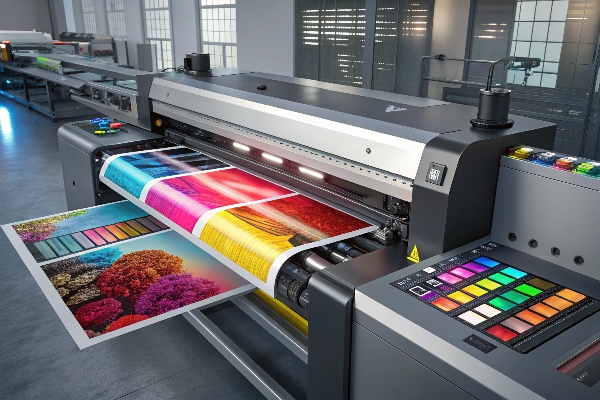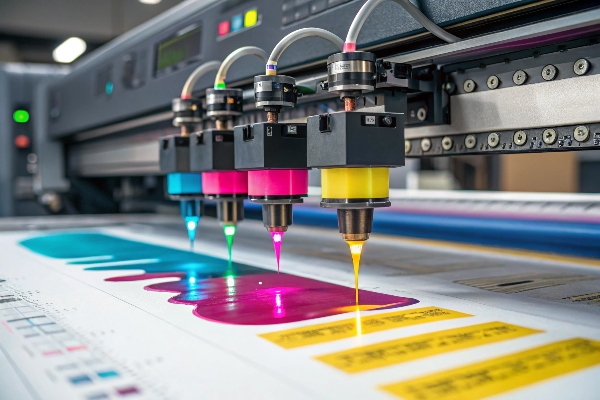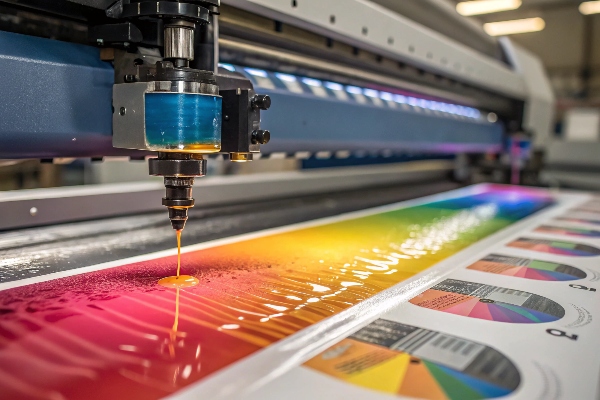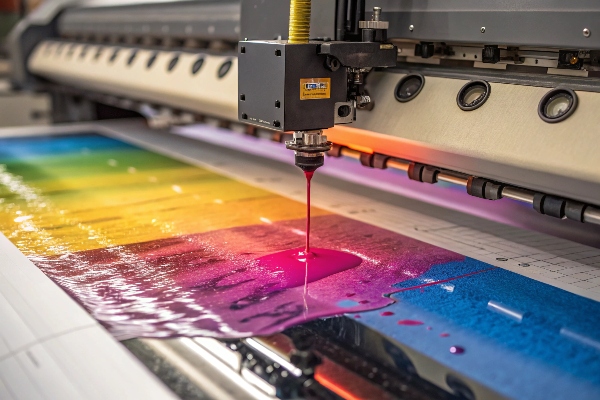Um eine verspätete Beantwortung Ihrer Anfrage zu vermeiden, geben Sie bitte Ihre WhatsApp-/WeChat-/Skype-Adresse zusammen mit der Nachricht an, damit wir Sie umgehend kontaktieren können.
Wir werden Ihnen innerhalb von 24 Stunden antworten. In dringenden Fällen fügen Sie bitte WhatsApp hinzu: +86 17864107808, oder WeChat: +86 17864107808. Oder rufen Sie an +86 17864107808 direkt.
*Wir respektieren Ihre Vertraulichkeit und alle Informationen sind geschützt. Wir verwenden Ihre Informationen nur zur Beantwortung Ihrer Anfrage und senden Ihnen niemals unerwünschte E-Mails oder Werbebotschaften.
Viele Menschen sind verwirrt, wenn es um Digitaldruckmaschinen geht. Mir ging es genauso, als ich anfing. Ich sah das Potenzial, hatte aber auch viele Fragen.
Eine Digitaldruckmaschine ist ein Gerät, das Bilder oder Texte direkt aus digitalen Dateien druckt. Sie verwendet spezielle Software und Hardware, um Tinte oder Toner auf Oberflächen zu übertragen. Sie bietet schnelle Einrichtungszeiten, flexible Anpassung und gleichbleibend hohe Qualität für verschiedene Materialien.

Tintenstrahldrucker
Ich entdeckte Digitaldruckmaschinen, als ich zum ersten Mal nach einer schnelleren Methode suchte, um Verpackungsprototypen herzustellen. Mir wurde klar, dass sie nicht nur schnell, sondern auch flexibel und leicht skalierbar waren. Ich werde mit Ihnen teilen, was ich über ihre Vorteile und Herausforderungen gelernt habe, damit Sie eine kluge Entscheidung treffen können. Ich betreibe mein eigenes Druckgeschäft bei Sena Printer. Wir stellen UV-Flachbettmaschinen für Verpackungen und Werbung her. Mir wurde klar, dass sich viele Leute über den Digitaldruck wundern. Lassen Sie mich seine Kernfunktionen erläutern und einige der Fragen beantworten, die mir häufig gestellt werden.
Ich dachte früher, UV-Drucker und Digitaldrucker seien dasselbe. Dann entdeckte ich wesentliche Unterschiede. Ich war verwirrt, fand aber Wege, die Unterschiede zu klären.
UV-Drucker härten Tinte sofort mit ultraviolettem Licht aus, was das Drucken auf verschiedenen Oberflächen ermöglicht. Digitaldrucker verwenden Methoden wie Tintenstrahl oder Laser, um Tinte oder Toner aufzutragen. Der Hauptunterschied besteht im Aushärtungsprozess und der Palette der kompatiblen Materialien. UV-Druck ist oft flexibler, insbesondere bei starren Substraten.

Großformatdruck
Ich habe gelernt, dass beim UV-Druck ultraviolette Lampen verwendet werden, um die Tinte kurz nach dem Auftragen auszuhärten. Diese Methode verhindert Verschmieren und erzeugt leuchtende Farben. Ich habe auch herausgefunden, dass UV-Tinten haften gut auf Holz, Metall, Kunststoff und Glas1. Das war mir wichtig, weil ich für kundenspezifische Verpackungen auf ungewöhnliche Substrate drucken musste. Ich habe festgestellt, dass Digitaldrucker nicht immer mit UV-Härtungstechnologie ausgestattet sind. Einige Digitaldrucker verwenden Tintenstrahl- oder Laserverfahren, die Hitze- oder Lufttrocknung erfordern. Diese Drucker funktionieren gut für Papier oder Karton, haben jedoch möglicherweise Probleme mit bestimmten Kunststoffen oder anderen Materialien.
Ich habe gesehen, dass der Aushärtungsprozess die Geschwindigkeit und das endgültige Erscheinungsbild beeinflussen kann. Meiner Erfahrung nach trocknen UV-Drucker sofort, was die Gefahr des Verschmierens verringert. Bei Digitaldruckern kann es jedoch länger dauern, bis die Tinte oder der Toner trocknen. Diese Verzögerung kann bei großen Produktionsläufen zu Verzögerungen führen, wenn die Fristen knapp sind. Ich habe die Materialkompatibilität beider Drucker verglichen. Mir gefiel, wie UV-Drucker sowohl flexible als auch starre Medien verarbeiten. Standard-Digitaldrucker erfordern manchmal spezielle Beschichtungen, um auf nicht-papierene Oberflächen zu drucken. Dieser Unterschied ist mir wichtig, da ich Vielseitigkeit für unterschiedliche Verpackungsaufträge wünsche.
Hier ist eine Tabelle, die ich erstellt habe, um diese Punkte zusammenzufassen:
| Aspekt | UV-Drucker | Herkömmlicher Digitaldrucker |
|---|---|---|
| Tintenhärtung | Sofort mit UV-Licht | Hitze- oder Lufttrocknung |
| Materialauswahl | Flexibel und starr | Meistens Papier oder beschichtete Medien |
| Druckqualität | Hoher Detailreichtum, kann ein glänzendes Finish haben | Hohe Detailtreue, weniger Glanz |
| Umweltauswirkungen | Tinten mit niedrigem VOC-Gehalt | Einige Tinten können höhere Emissionen aufweisen |
Ich habe beide Arten von Maschinen verwendet. Ich sehe, wie UV-Druck kann für Verpackungsprototypen die bessere Wahl sein2 die ein auffälliges Finish benötigen. Für einfachere Papierarbeiten kann jedoch auch der Standard-Digitaldruck ausreichen. Dieses Verständnis hilft mir, für jedes Projekt den richtigen Drucker auszuwählen.
Ich war immer der Meinung, dass Digitaldrucker wie von Zauberhand funktionieren. Ich fragte mich, ob sie wirklich Tinte oder Toner benötigen. Als ich die Wahrheit erfuhr, war ich sehr überrascht.
Ja, Digitaldrucker benötigen Tinte oder Toner3. Tintenstrahl-Digitaldrucker verwenden flüssige Tinte in Patronen, die Tröpfchen auf das Medium sprühen. Laser-Digitaldrucker verwenden Tonerpulver, das sich durch Hitze mit dem Papier verbindet. Beide Verfahren sind auf eine Versorgung mit Farbstoffen angewiesen, um Texte, Grafiken und Bilder klar darzustellen.

„Lebendiger Druck“)
Vor einigen Jahren habe ich versucht, eine Reihe von Farbtests auf meinem Digitaldrucker durchzuführen, ohne dass genügend Tinte vorhanden war. Das Ergebnis waren inkonsistente Farben und fehlende Abschnitte meiner Designs. Dies erinnerte mich daran, dass die digitale Drucktechnologie auf eine stetige Versorgung mit Tinte oder Toner angewiesen ist. Ohne sie kann selbst das beste Design nicht zum Leben erweckt werden. Mir ist auch aufgefallen, dass verschiedene Marken und Druckermodelle einzigartige Tintenformeln verwenden. Einige Drucker verwenden farbstoffbasierte Tinte, während andere auf pigmentbasierte Tinte angewiesen sind. Einige Marken haben Patronensysteme und andere verwenden Bulk-Tinten-Setups.
Ich habe gelernt, dass Farbstofftinte4 kann leuchtende Farben erzeugen, kann aber bei Kontakt mit Sonnenlicht oder Feuchtigkeit schneller verblassen. Pigmenttinte bietet möglicherweise nicht die gleiche Lebendigkeit, hat aber tendenziell eine längere Lebensdauer. Einige Drucker verwenden Öko-Lösungsmittel- oder UV-härtende Tinten. Diese Tinten ermöglichen das Drucken auf mehr Substraten, was für Verpackungsprojekte hilfreich ist, die spezielle Materialien erfordern. Ich sehe auch, dass tonerbasierte Laserdrucker auf einem feinen Pulver basieren, das auf dem Papier erhitzt wird. Dies ist in Büroumgebungen üblich, kann aber auch kommerzielle Vorgänge unterstützen, wenn Geschwindigkeit und Volumen oberste Priorität haben.
Hier ist eine einfache Tabelle, die einige wichtige Unterschiede bei den Tintenarten zeigt:
| Tintentyp | Pro | Nachteile |
|---|---|---|
| Farbstoffbasiert | Helle Farben | Geringere Lichtbeständigkeit |
| Pigmentbasiert | Bessere Haltbarkeit | Kann weniger lebendig sein |
| Öko-Lösungsmittel | Gut für Banner | Möglicherweise ist eine Belüftung erforderlich |
| UV-härtbar | Schnelltrocknend, vielseitig einsetzbar | In der Regel teurer |
Ich arbeite in der Verpackungsbranche. Ich brauche oft kräftige Farben, die lange halten. Ich mag UV-härtende Tinten5 für meinen UV-Flachbettdrucker und ich verwende pigmentbasierte Tinten für Standard-Digitaldrucke. Ich denke, dass Sie bessere Druckentscheidungen treffen können, wenn Sie Ihre Tintenoptionen kennen.
Früher habe ich geglaubt, dass der Digitaldruck keine Mängel hat. Durch Ausprobieren habe ich jedoch einige Nachteile entdeckt. Ich habe Fehler gemacht, aber ich habe gelernt, diese Nachteile zu verringern.
Bei großen Auflagen können die Stückkosten beim Digitaldruck höher sein. Im Vergleich zum Offsetdruck sind die Papierformatoptionen und die Farbabstimmung möglicherweise eingeschränkt. Manche Drucker haben mit bestimmten Materialien oder Veredelungstechniken Probleme. Außerdem kann die Haltbarkeit von Digitaldrucken je nach Tintentyp, Substratauswahl und Nachbearbeitungsmethoden variieren.

Digitaldruck
Einmal habe ich versucht, eine große Bestellung von Verpackungskartons auf einem Digitaldrucker abzudrucken. Ich sah, dass die Kosten pro Karton höher waren, als wenn ich eine Offsetdruckmaschine verwendet hätte. Digitaldruck kann bei kleinen Auflagen kosteneffizient sein, wird aber bei großen Mengen teuer. Ich habe gelernt, dass Skaleneffekte nicht immer zugunsten des Digitaldrucks ausfallen. Ich habe auch festgestellt, dass Digitaldrucker manchmal Größenbeschränkungen haben. Dies kann meine Optionen einschränken, wenn ich übergroße Drucke oder spezielle Veredelungen wie Folienprägungen oder Prägungen benötige.
Mir ist aufgefallen, dass die Farbabstimmung schwierig sein kann, insbesondere beim Corporate Branding. Digitaldrucker können helle Farbtöne erzeugen, bei großen Druckauflagen können jedoch leichte Abweichungen auftreten. Offsetdruckmaschinen liefern bei großen Auflagen möglicherweise konsistentere Farben, benötigen jedoch mehr Zeit und Einrichtung. Ich habe auch festgestellt, dass Digitaldrucke Haltbarkeitsprobleme haben können, wenn die Tinte oder der Toner nicht gut mit bestimmten Beschichtungen oder Laminaten haften. Das kann zu Problemen führen, wenn die Verpackung Transport- oder Lagerbedingungen standhalten muss. Ich habe festgestellt, dass UV-Drucker einige dieser Probleme lösen, indem sie eine stärkere Haftung und schnellere Trocknung bieten, aber die Kosten können dennoch hoch sein.
Ich habe eine einfache Tabelle erstellt, um einige Nachteile zu vergleichen:
| Nachteil | Erläuterung |
|---|---|
| Höhere Kosten für große Auflagen | Bei Großbestellungen können die Stückkosten steigen |
| Begrenzte Größenoptionen | Einige Digitaldrucker können große Formate nicht verarbeiten |
| Probleme mit der Farbabstimmung | Bei längeren Auflagen können leichte Abweichungen auftreten |
| Mögliche Haltbarkeitsprobleme | Tinte oder Toner haften möglicherweise nicht gut, was zu Verschleiß führt |
Ich denke, diese Nachteile sollten berücksichtigt werden, wenn Sie bei großen Produktionen auf Digitaldruck setzen. Sie können verschiedene Verfahren wählen oder Offset- und Digitaldruck kombinieren. Ich habe das getan, um Kosten, Größe und Qualität ins Gleichgewicht zu bringen. Mit dieser Strategie konnte ich die unterschiedlichsten Verpackungsanforderungen erfüllen und gleichzeitig die Kunden zufriedenstellen.
Ich halte den Digitaldruck für eine leistungsstarke Methode, sehe aber auch seine Grenzen. Ich habe vor, weiterhin neue Ansätze zu testen, um Geschwindigkeit, Qualität und Vielseitigkeit zu verbessern.